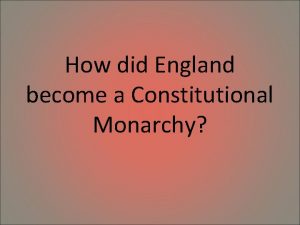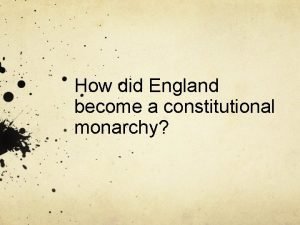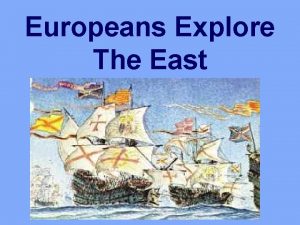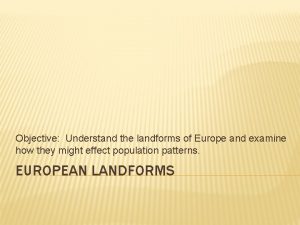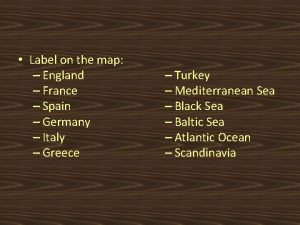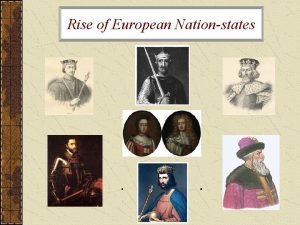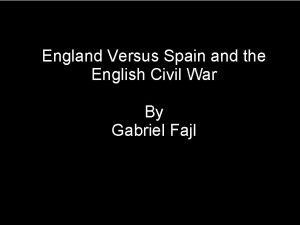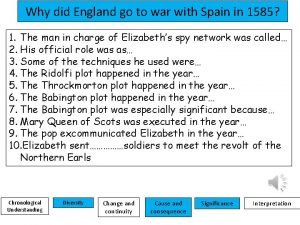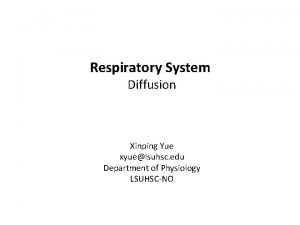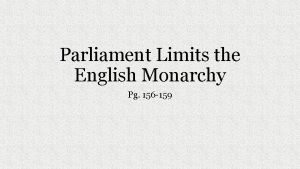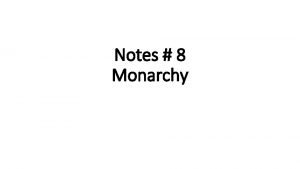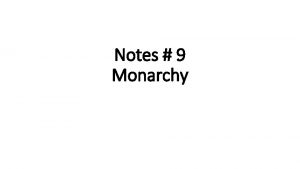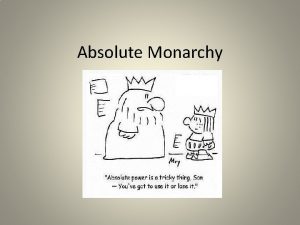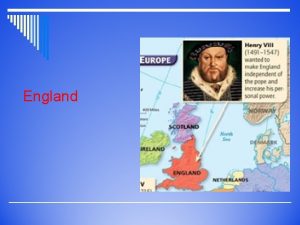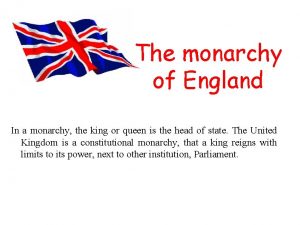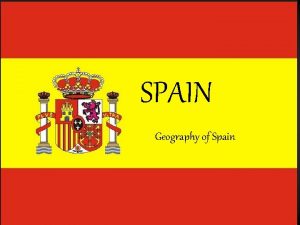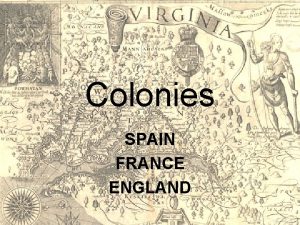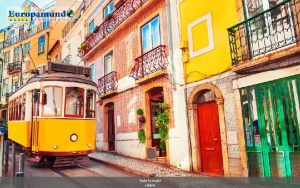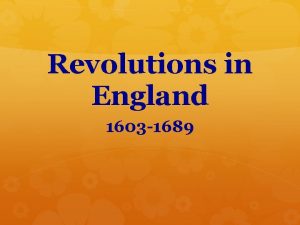Portugal Spain SPAIN Limited Monarchy IN ENGLAND While












- Slides: 12

Portugal Spain SPAIN

Limited Monarchy IN ENGLAND While other nations turned to absolutism in the 1500 s and 1600 s, England’s Parliament resisted the power of the throne.

English nobles feared that kings would abuse their powers and take away their rights. These rebellious nobles forced King John to sign the Magna Carta: Limited the power of the king: -monarch could not… *raise taxes without approval from parliament * arrest and convict people that have not committed a crime

Parliament Governing body that checks the monarch’s power by making England’s laws, creates taxes and advises the king on other matters of royal policy.

CONGRESSS

Stuarts and Parliament Stuart rulers such as James I and Charles I defied Parliament. These English rulers believed firmly in divine right and wanted to rule as absolute monarchs “The state of monarchy is the supremest thing upon earth; for kings are not only God’s lieutenants upon earth, and sit upon God’s throne, but even by God himself are called gods. ” -king James I, 1609

English Civil War Conflict continued between the kings who believed in absolute power of the monarchy and a Parliament that saw itself as independent of the king. Royalists • supporters of the king • mostly wealthy nobles. Roundheads • Supporters of Parliament • Puritans, merchants and some members of the upper class • Led by Oliver Cromwell

Execution of a king 1646 The king surrendered. The English Civil War ended. Parliament charged King Charles with treason. They put him on trial, convicted and sentenced him to death. He was publicly beheaded in front of his palace.

England under Cromwell • Ruled England as a Puritan • Demanded complete obedience • Closed theaters and other forms of popular entertainment

Restoration of the Monarchy When Cromwell died Parliament voted to bring back the monarchy-an event known as the Restoration. Parliament would crown Charles’s son king Charles II would pass the Habeas Corpus Act which would guarantee that someone accused of a crime had the right to appear in court to determine if the accused should be held or released.

James II who succeeded Charles II was unpopular because he was Catholic, also because he wholeheartedly believed in ruling as an absolute monarch. Parliament invited James’s daughter Mary and her husband William to become king and queen. James fled to France when William arrived in England with an army. This bloodless transfer of power was known as the Glorious Revolution. Before they could take power Parliament required them to sign the English Bill of Rights

English Bill of Rights – a set of acts passed by Parliament to ensure its superiority over the monarchy. It stated: • King must work with Parliament • House of Commons has financial control (Parliament) • Abolished excessive fines and cruel and unusual punishment • Affirmed habeas corpus – no person could be held in jail without first being charged with a crime. Although many nations throughout Europe were governed by absolute monarchs, England became a limited monarch in which the monarch’s power was limited by law.
 When did england become a constitutional monarchy
When did england become a constitutional monarchy When did england become a constitutional monarchy
When did england become a constitutional monarchy England and portugal
England and portugal South america yucatan peninsula
South america yucatan peninsula Spain and portugal
Spain and portugal Northern europe landforms
Northern europe landforms England france map
England france map England france spain
England france spain England versus spain
England versus spain Why did england and spain go to war
Why did england and spain go to war Ficks law
Ficks law Pernyataan do while
Pernyataan do while Parliament limits the english monarchy
Parliament limits the english monarchy
